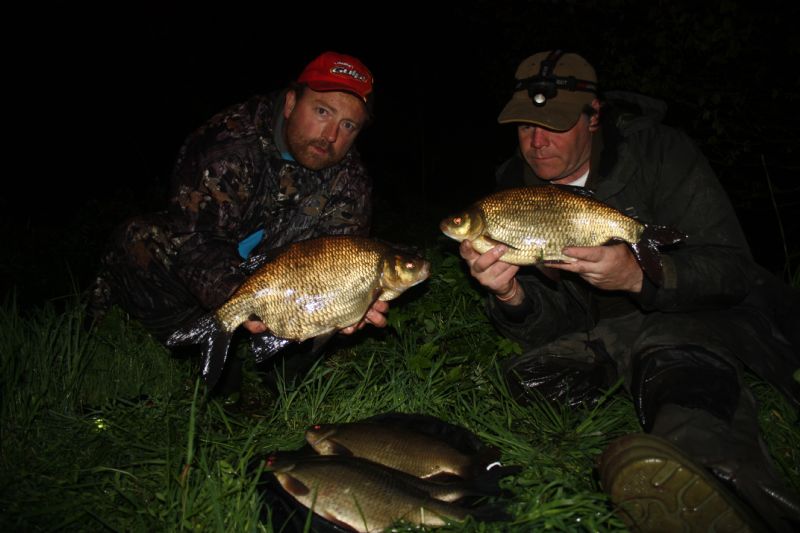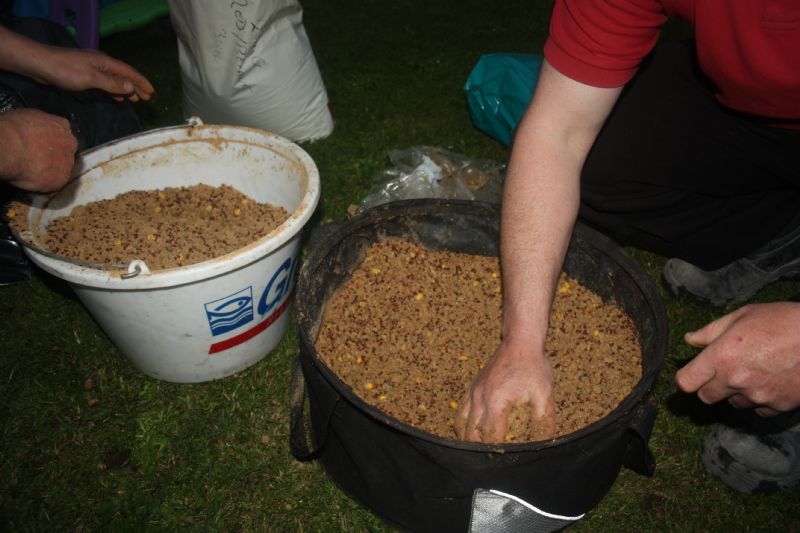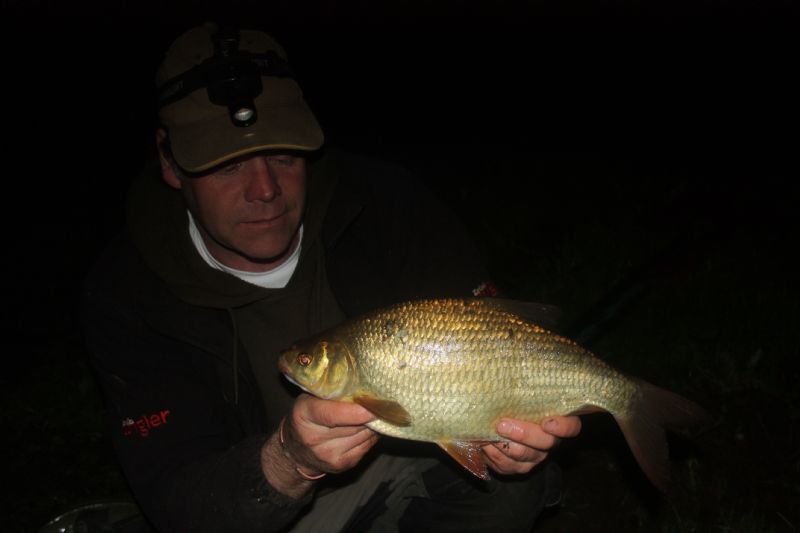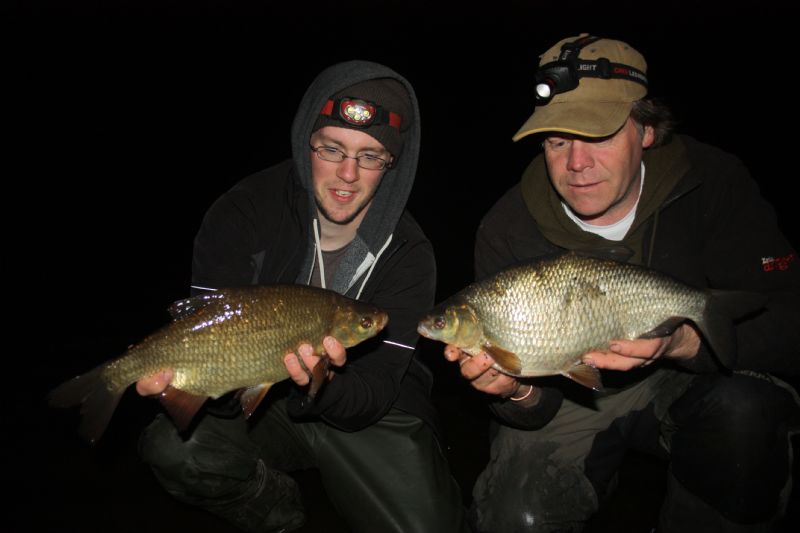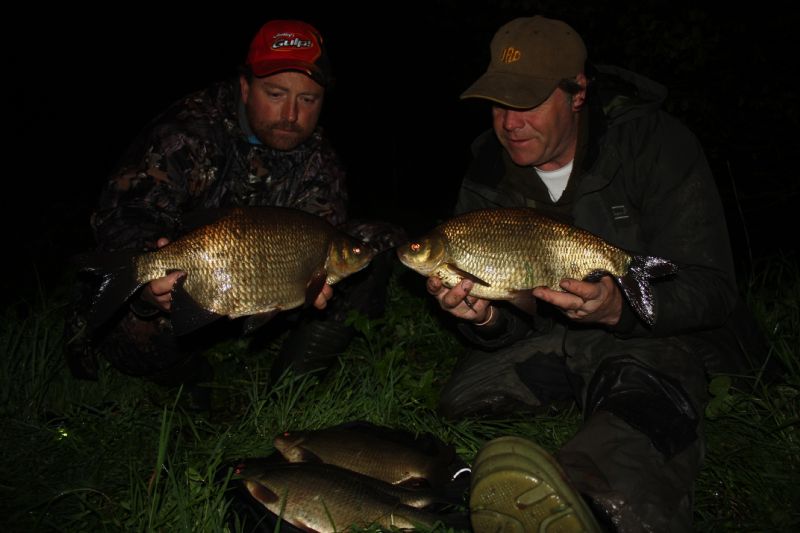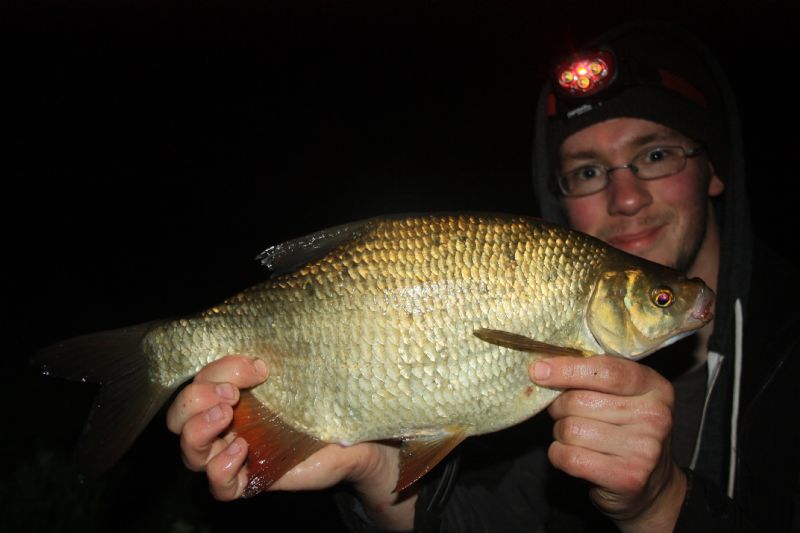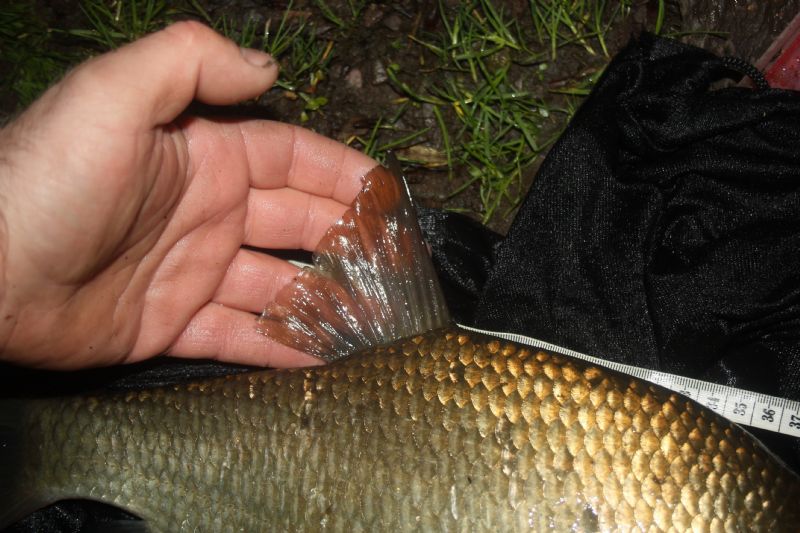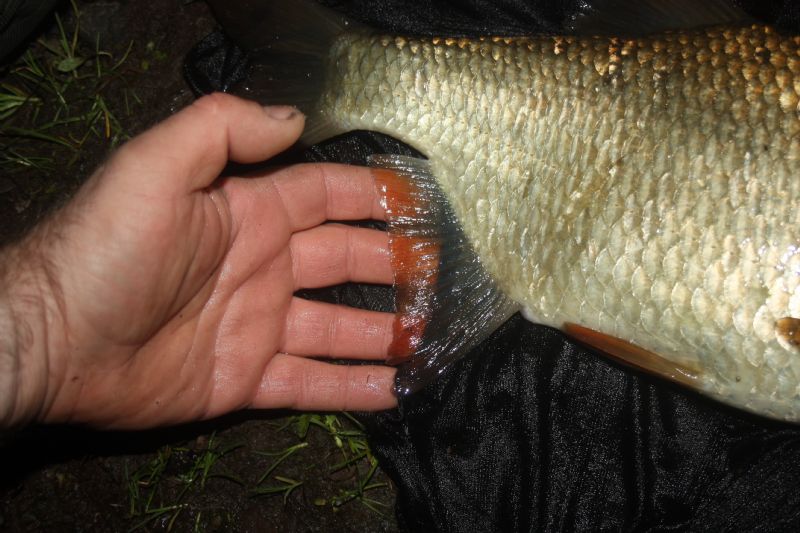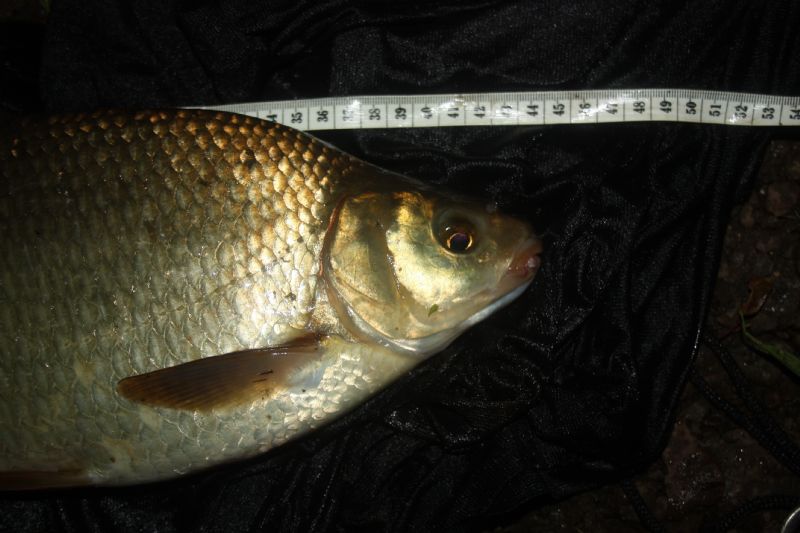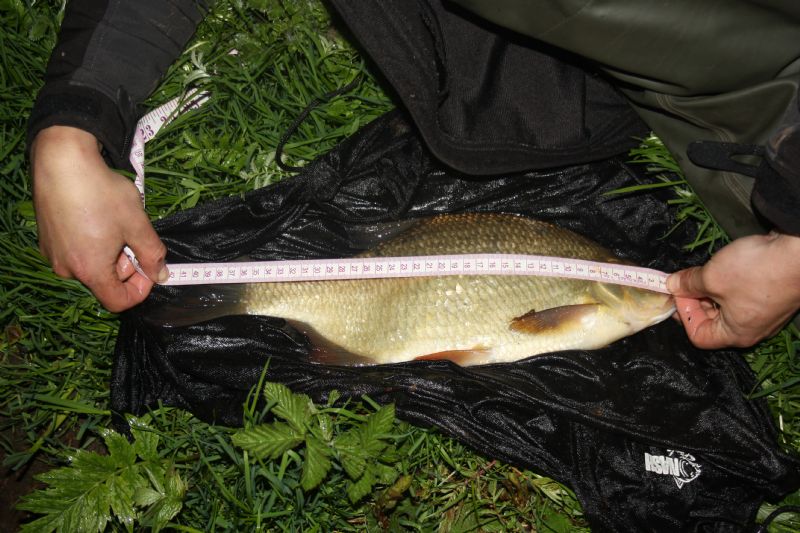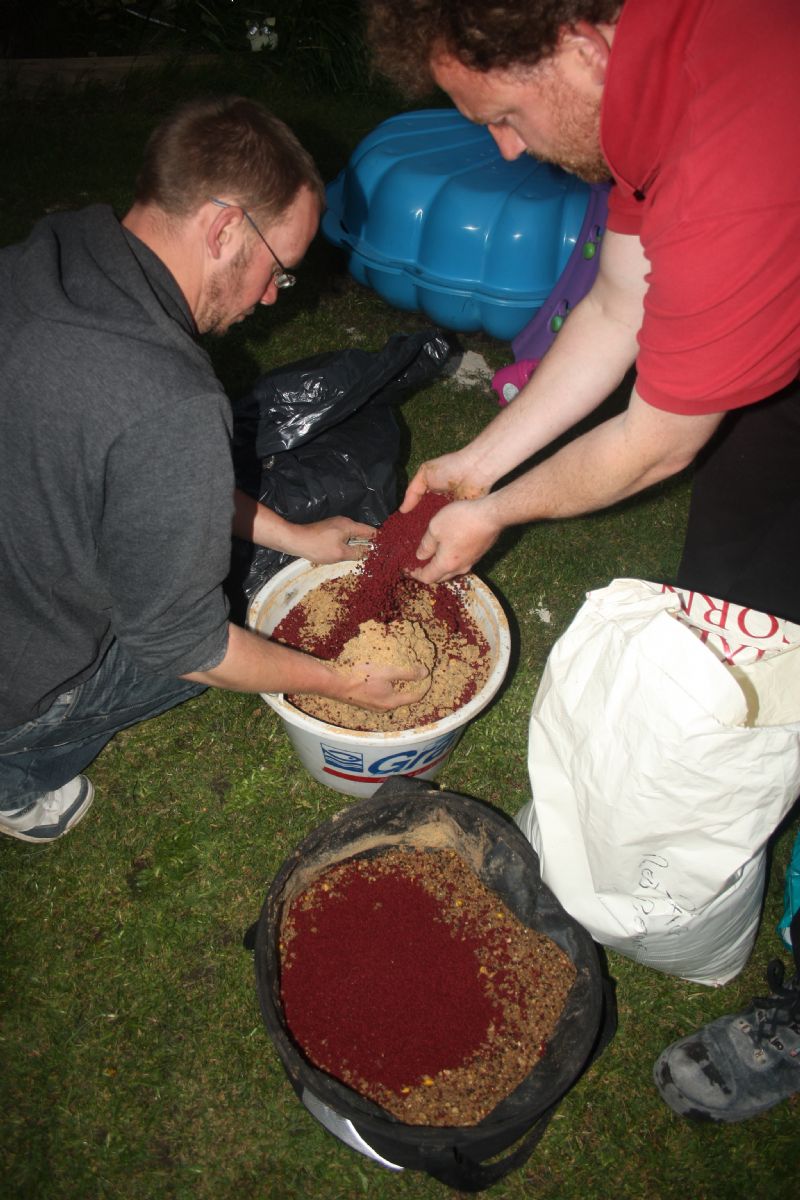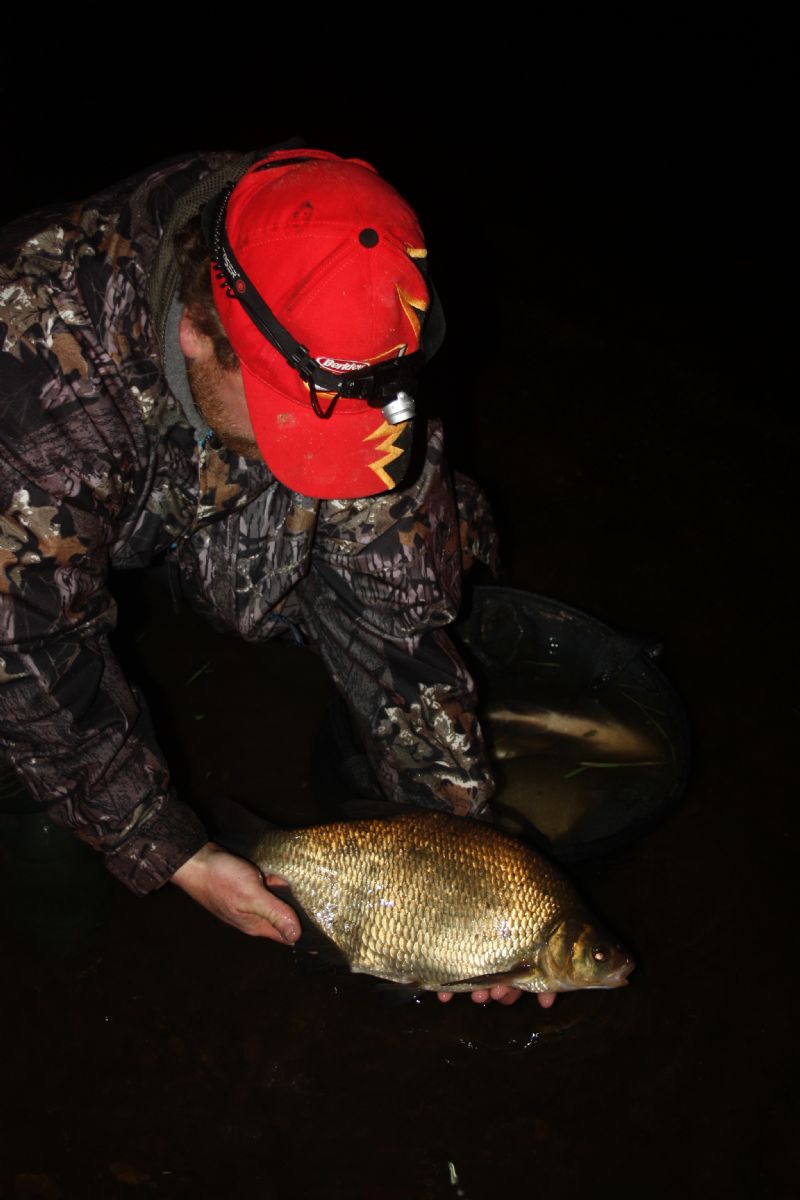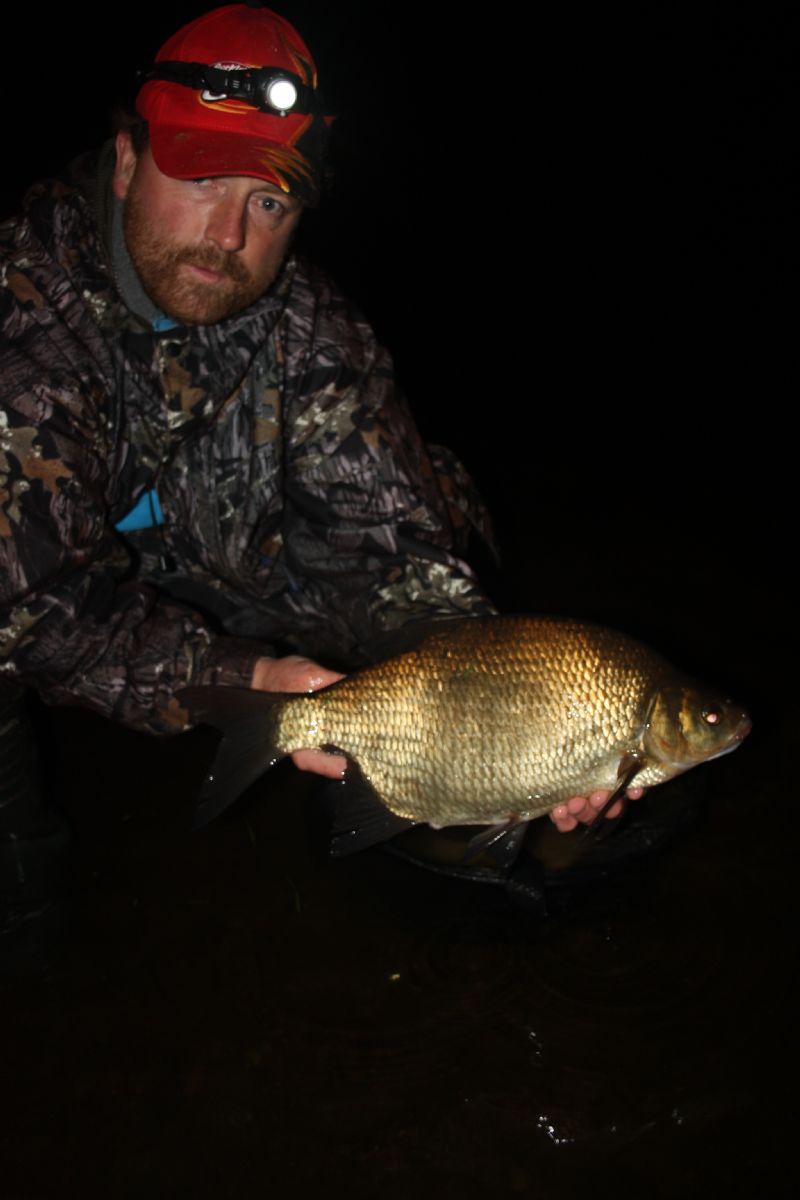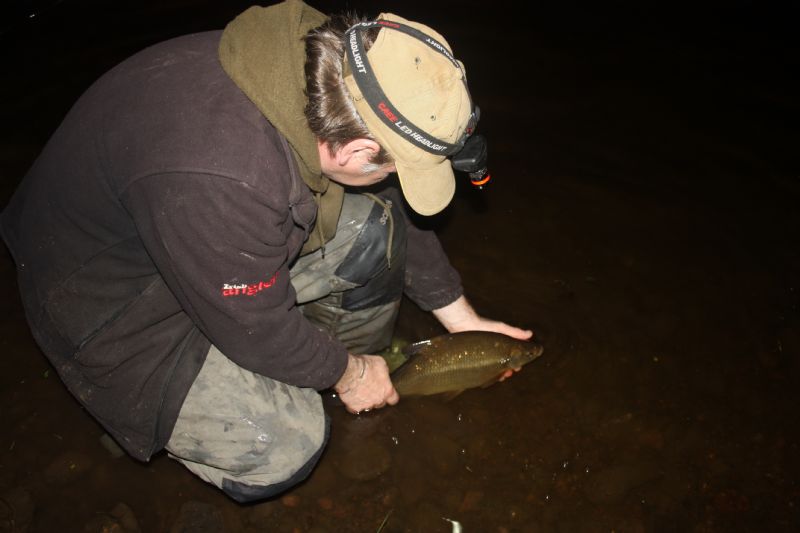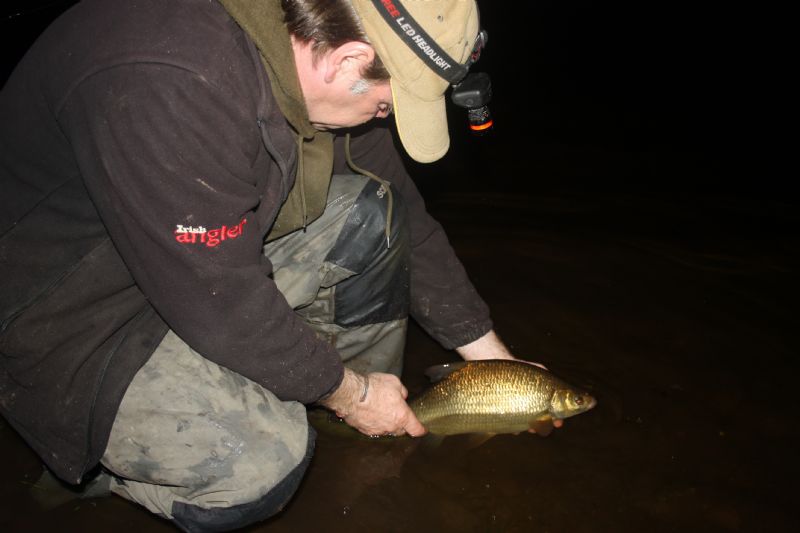Rudd-Bream Hybrids
Irish Rudd-Bream Hybrids
Targeting specimens
On a recent work trip down in Cork City, I managed to cram in quite a bit of specimen hunting for several species, and thanks to my angling mate Sid Kennedy, I also squeezed in a very enjoyable Rudd-Bream Hybrid session.
Sid had kindly pre-baited a secret location on the local dam, one that could only be accessed by boat in order to make sure the spot would be vacant. With a little bit of lady luck, there should be a few large Hybrids sniffing around.
Bill Brazier, another friend and angling nut would also join us, and I eagerly anticipated the chance to fish with two highly qualified anglers. Apart from being on the same wave-length regarding specimen hunting, it is always an added opportunity to pit my skills against a crack team. The bonus being I usually end up having learnt a lesson or two from the experience!
Mixing plenty of cumb and particles for the feeder session ahead
We met up, bank-side early evening, loaded the boat with all and sundry and carefully made our way to Sid’s potential hot-spot. I half expected to be blind-folded on the way, but I reckon Sid trusts my discretion by now. I don’t like all this “cloak and dagger” stuff as a norm, but sometimes it is necessary to guarantee an un-disturbed angling mark, and when a lad is good enough to take you to a favourite swim, there are occasions when you have to respect his secrecy.
We were soon on the mark, and eagerly setting up before the sun finally began to settle behind the tree line. The baited area was at forty yards, and once the distance had been gauged correctly, I used the line clip for ease of accuracy, dropping a feeder “on a six-pence” with every cast. Small Roach were in abundance, and although a bit of a nuisance, served to pass the time, along with keeping an accurate and steady stream of feed going in. This can be extremely useful, also serving as casting practice to “get your eye in” for the hours of darkness.
A small "scraper" specimen, but a specimen none-the-less
With the sun now well and truly over the horizon, the Roach bites began to slow down. I am never sure whether this is simply the Roach going off the feed and settling down for the night, or the larger Hybrids moving in and pushing the smaller fish out of the baited area. Either way, when the Roach quieten down, it usually heralds the arrival of the larger specimens, and I am glad to say, tonight was no exception. Sid was first to find a decent Rudd-Bream Hybrid, as they moved upstream, homing in on the scent trail of continental ground-bait and ground hempseed. With me in the middle, I was next to sample the dogged fight of a specimen, soon followed by Bill. It is always satisfying when all anglers hit into quality fish in the same session.
A brace of specimen Hybrids landed at the same time
With this shoal of hybrids averaging two-three pounds, they weren’t huge by any means, but with the specimen barrier set at just over two pounds and ten ounces, we were quietly confident of finding our three qualifying fish each. By midnight, we had each achieved the three specimen target, and continued catching in the hope of bettering our results. To be perfectly honest, this type of feeder fishing with quality fish on the go, it is just too bloody enjoyable to quit.
With all three of us having to work the following morning, we gave ourselves a 2am time limit, which came all too quickly! It is almost impossible to leave feeding fish, with the adrenaline keeping the tiredness at bay, but we have all been here before, burning the candle at both ends and absolutely fit for nothing the next day! We did the right thing and packed up the kit, sorted out the boat and headed for home. Thanks go to Sidney for putting us over quality fish yet again, and to both Bill and Sid for an enjoyable angling session in good company.
Claiming a Hybrid at specimen size
In the past, it was necessary to kill a hybrid to absolutely guarantee a specimen claim. The actual body of the fish had to be presented for accurate and scientific identification. This would be through scale and fin ray counts, size and shape, or for absolute accuracy, examination of the pharyngeal teeth. As you would expect, most specimen hunters were not able to kill such a fabulous prize, with many actually taking the fish, keeping it alive, having it expertly identified and then returning it to the place it was captured. I actually did this with a record Roach. Obviously this was time-consuming and expensive, not to mention stressful to the fish.
Bill Brazier with a potential specimen Rudd-Bream Hybrid
The Irish Specimen Fish Committee have moved on from those earlier days for this reason, and also with new legislation, it is not permitted to kill a coarse fish over twenty five centimetres. For maximum chance of having a claim accepted, three scales should be carefully removed from the fish, along with an accurate measurement of length. Also, good clear photographs of the head, dorsal and anal fins and a shot of the entire fish. This all sounds quite dramatic, and it is up to the angler to decide whether he wishes to put the fish through all this, but in reality, with equipment ready beforehand, the whole process can be completed in less than a minute.
Quality photographs are required of Dorsal, and anal fins
Fish scales slide out easily and generally cause little harm. I believe this because I have experienced re-captures many times. On one particular venue, I landed a specimen Roach-Rudd Hybrid with a badly damaged tail and half its scales missing due to a common parasite known as Argulus. I quickly and carefully picked off somewhere between thirty and forty of these awful creatures, photographed and released the fish. Over the following six trips to the venue, we re-captured the same fish five times, looking stronger and healthier on each occasion. The scales are sent for genetic finger-printing and accurately distinguish the DNA make-up of the particular specimen.
Also, a clear photo of the head, and overall length of fish from tip of snout to middle rays of tail
So, with a couple of scales in an envelope, decent photographs and a certificate of calibration for your weighing scales (calibrated before fish capture), all that is required is to fill in the application form and hope for the best. I realise this isn’t to everyone’s taste but the information is collated by the Irish Specimen Fish Committee and gives a reading of how our larger species are performing regarding survival, population, distribution and growth rates in Irish waters. One hopes and trusts that this information is acted upon, and used to the benefit of both fish and angler for the future. For further information on specimen hunting and how to submit a claim for a particular species, log on to www.irish-trophy-fish.com




